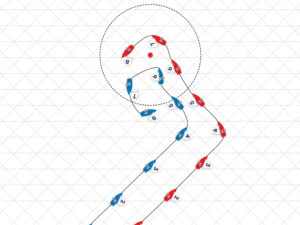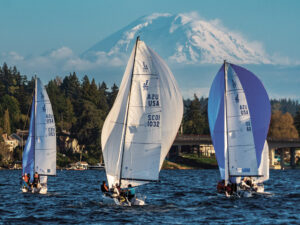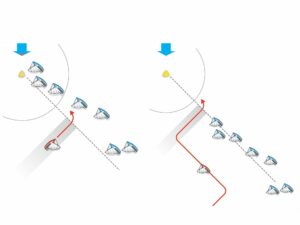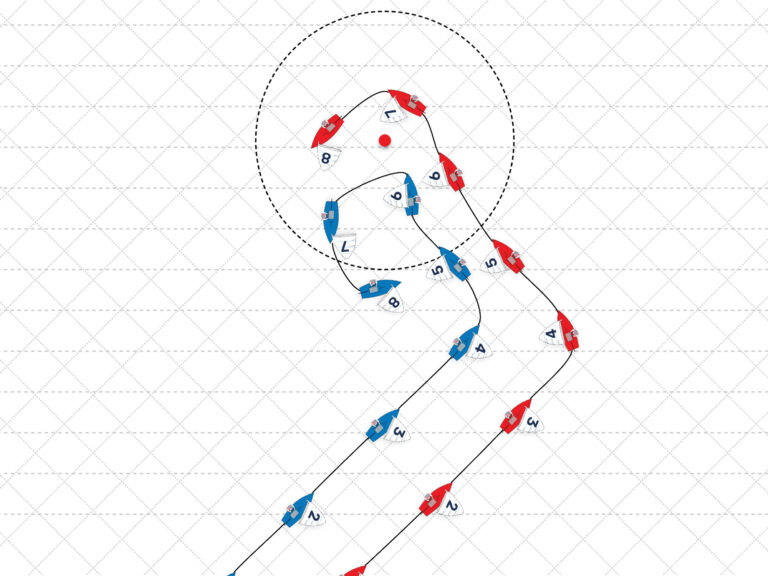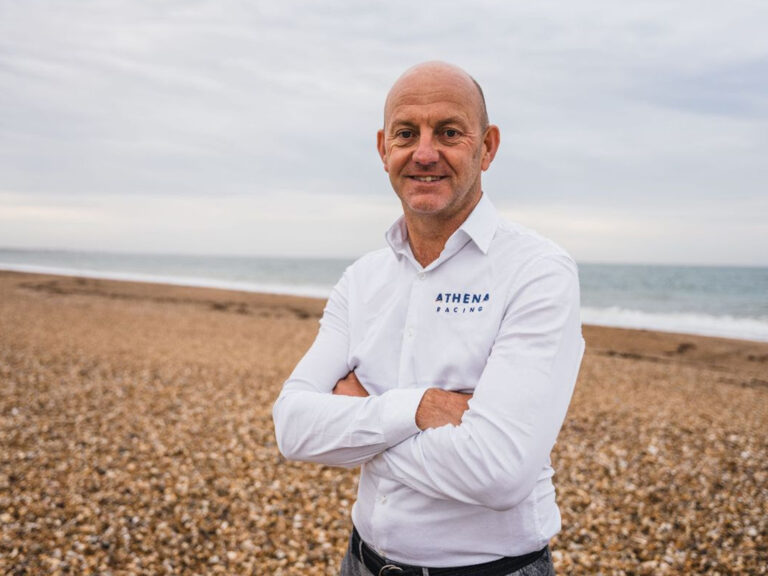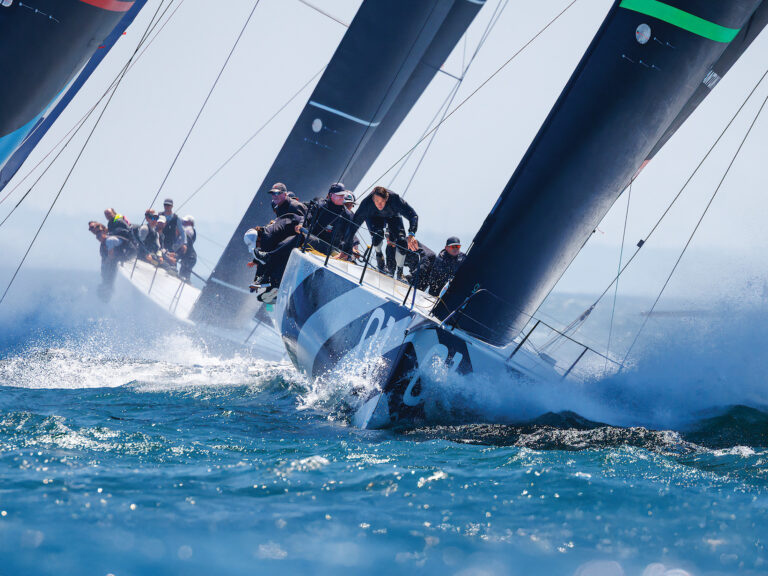
Johnny Heineken Kiteboarding
A seasoned windsurfer and sailboat racer, Paul Heineken is no stranger to high-level sailing. But as he watched his son, Johnny, race his kiteboard at the 2012 World Course Racing Championship in Cagliari, Italy, Heineken was surprised to observe from the sidelines just how dominant his son was in terms of “boatspeed,” parental bias aside.
“He was conservative to get off the line to avoid tangles,” he says, “but I timed him on the legs, and he would gain almost 15 seconds on every leg once he got clear. If he rounded the weather mark 5 seconds behind, he would be 10 seconds ahead at the bottom, then would just keep stretching. He showed phenomenal speed in different conditions.”
This consistent show of speed—and skill—won Johnny the Kiteboarding Course Racing World Championship title for the second consecutive year. Added to a string of other podium finishes in 2012, including first in the Kiteboarding North American Course Racing Championship in his hometown of San Francisco, it’s no wonder Johnny was awarded the highly coveted title of US Sailing’s 2012 Rolex Yachtsman of the Year.
What’s your reaction to being the Rolex Yachtsman of the Year?
I was super excited—it’s not something I thought I’d ever get close to. Being on the shortlist for two years in a row was pretty cool to have that recognition for kiting. I had a good year, and people are willing to accept kiting into the sailing world. It’s exciting to be recognized for how much work I’ve put in over the last two years to get here.
You grew up sailing; how did it help your kiteboarding?
It’s definitely made me a better course racer. I grew up sailing dinghies—Lasers—with my family, then graduated to 29ers. I raced in the 29er Worlds when I was in the 11th grade, and finished fifth in the 2008 49er U.S. Olympic Trials. We’ve optimized our kite gear for typical sailboat racing courses. It’s really the same game, the same tactics. But, like every other class, it’s time on the water—you can call it a boat or a board or whatever.
What were the challenges competing for the world title a second time?
It was way more competitive than any other event last year. I didn’t go into it thinking I was going to win every race of the event. In 2011, in San Francisco, it was survival conditions—30 knots and huge waves on the Bay. The San Francisco boys were like, “OK, we can sail in this,” and everyone else was freaking out. Cagliari was really close racing, with breeze up to 18 knots and big fleets, and it was a very different setup with a huge number of competitors [148]. The format was also different with the medal race and everything coming down to the last race.
How do you improve your performance when you’re at the top of your game?
A lot of it is just staying in shape and keeping used to the gear. Generally it’s the same as with any boat; you get out there to tune and play with little differences in equipment and see if that helps, adjust your riding style. But I find racing is the best practice, as so much of it isn’t something you can train for. It’s just going around the course a bunch, which is what we do: a lot of short-course racing to get in as many maneuvers—tacks, jibes, mark roundings, and close situations—because everything happens so fast. You can only get to that point if you just put in hours and hours and hours on the water.
Who pushes you?
Everyone! I’m lucky that I’ve got the best guys in the world to train with—Adam Koch and Brian Lake are my main training partners. Fortunately in the Bay Area we have the top guys. We all train together and have grown as a group, so that’s what brought us all to the top. We push each other plenty on the Bay.
How has your equipment evolved for course racing?
Over the last five years it’s gone from something that was non-existent to something that’s as fast as any other craft around the course. Five years ago people were riding twin tips, surfboards, and crappy kites. Races had to be held on ebb tides on the Bay because you needed the current going upwind to get you around the course. Now we’re on big boards with a lot of volume that plane in light wind with huge fins. There’s a ton of power. The kites are much more efficient—it’s just a dream. We can go out in under 10 knots and continue to race with the same gear until it’s well over 30. It’s high performance and versatile.
What was your reaction when kiteboarding was pulled from the 2016 Olympics?
I was initially really disappointed in that this was the one shot I had to be involved with a sport at the highest level. But the Olympics also came with a lot more stress, increased gear regulations, formats that don’t really work for us, and people who have never raced kites let alone seen us sail. Without the boundaries imposed by Olympic regulations, we can continue to develop as we want, and sail the courses we want on gear that we choose. If ISAF wants to have us in the Olympics, they’ll have to take us as we are.
Who funds your racing?
Kite sponsors, the yacht club foundation (St. Francis YC), and me, basically. My sister, Erika, and I are sponsored by the Silicon Valley Bank, our first out-of-industry sponsor, and our kite sponsor Ozone usually picks up our flights and housing at events. There seems to be more money being thrown at the sport as it becomes more organized. We’ve just formed the American Kiteboarding Association so hopefully we’ll have a bigger voice outside of the sport itself.
How do you juggle work and play?
I have a degree in mechanical engineering and work on the mechanical team at Makani Power, an alternative energy company. We’re developing air-borne turbines, or kites that generate electricity. I’m lucky that they let me play but I’m probably going to have to compromise at some point and start focusing more on work. Right now I’m a part-time employee so I can leave to compete when I need to.
What do you do for fun when you’re not on the water?
I do a lot of stuff outdoors, particularly anything on the water, as I grew up on the water—it’s my main focus. I don’t get tired of kiting, but I don’t need to spend eight hours on the water anymore. The thing with kiting is that you can always go do something different, like I have my foil board to play on, and I’m going snow kiting in Utah in a few weeks. It’s fun over the whole spectrum.

